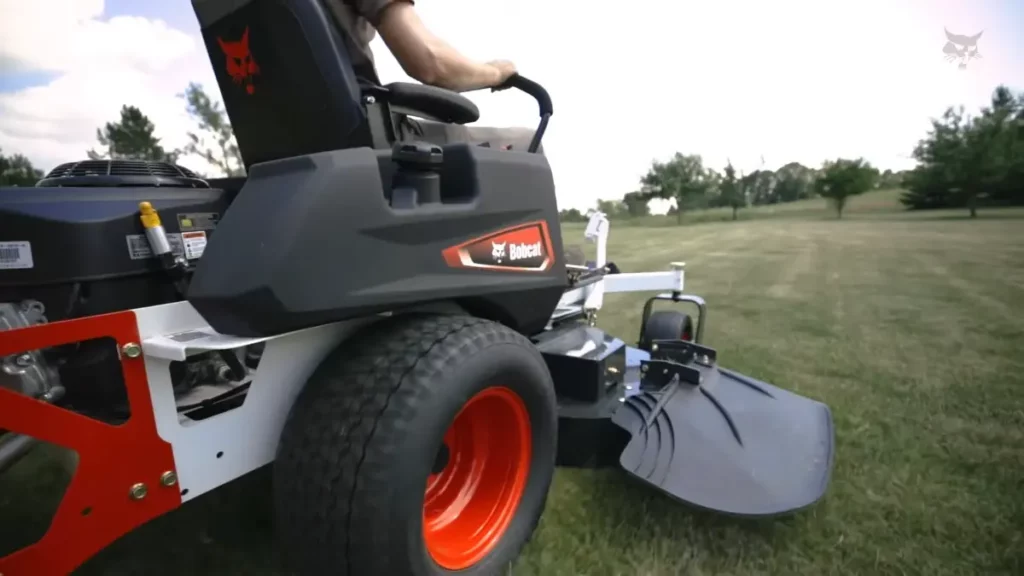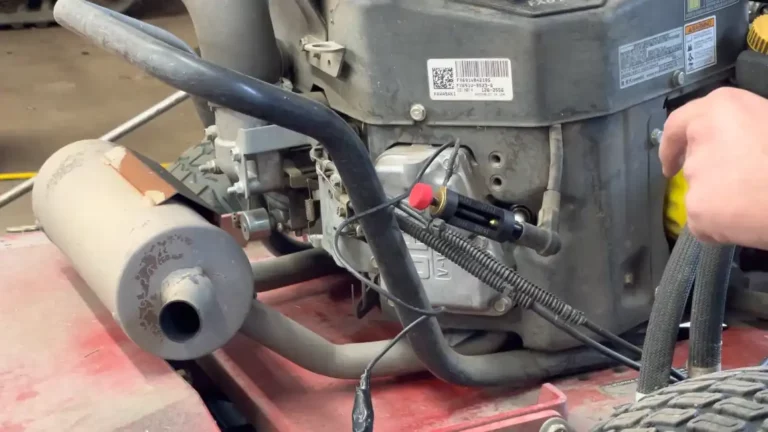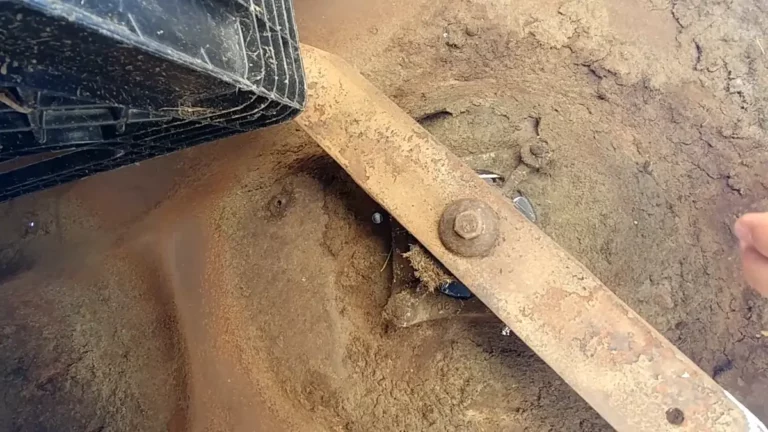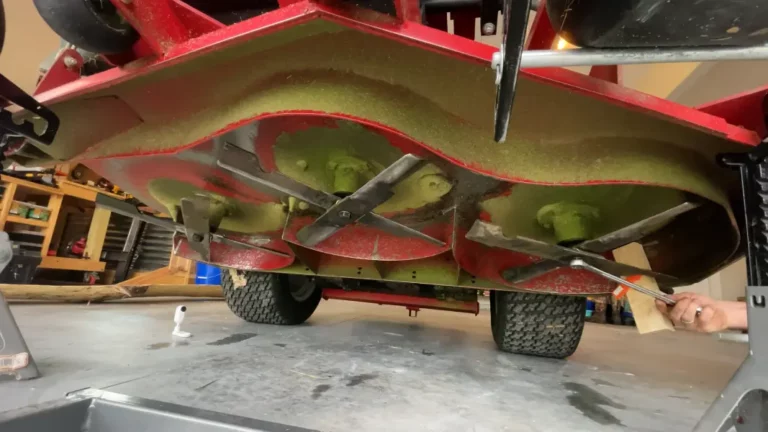Mower Deck Will Not Raise or Lower: Reasons and Solutions
A well-groomed lawn is every homeowner’s pride, but the joy of mowing can swiftly turn into frustration when your mower deck will not raise or lower.
The causes behind this problem are as diverse as the landscapes they trim, ranging from disconnected lift links to electrical glitches and alignment issues.
This article will uncover the common factors that can paralyze your mower deck and provide practical solutions to ensure you return to the pleasure of a neatly manicured lawn.

Common Reasons for Mower Deck Will Not Raise Or Lower
When a mower deck is not raising or lowering, there can be several potential causes. Here are some common reasons for this issue:
1. Disconnected or Broken Lift Links
One possible cause is that the lift links, which connect the deck to the lifting mechanism, may be disconnected or broken. Inspect the lift links to ensure they are properly connected and not damaged.
2. Malfunctioning Hydraulic System
If your mower deck uses a hydraulic system to raise and lower, there may be an issue with the hydraulic components. Check the hydraulic fluid levels, inspect for leaks, and ensure that the hydraulic pump is functioning correctly.
3. Faulty Deck Lift Mechanism
The deck lift mechanism, including the lift arms and associated hardware, may be faulty or damaged. Inspect these components for any signs of wear, damage, or misalignment.
4. Electrical Problems
In some cases, electrical issues can prevent the mower deck from raising or lowering. Check the wiring connections and switches that control the deck’s operation to ensure they are functioning properly.
5. Belt Tension or Alignment Issues
Improper belt tension or misalignment can prevent the deck from raising or lowering correctly. Check the deck belt for proper tension and alignment, and adjust as necessary.
6. Operator Error
It’s possible that the issue may be due to operator error. Ensure that you are following the correct procedure for raising or lowering the mower deck, as outlined in the operator’s manual.
Step-by-Step Diagnosis and Solutions
When faced with a mower deck that stubbornly remains at a fixed height, a step-by-step diagnosis is essential to pinpoint the underlying problem and apply the appropriate solution.
Check the Hydraulic System
- Verify hydraulic fluid level.
- Look for hydraulic line leaks.
- Refill fluid to recommended levels.
- Repair or replace damaged hydraulic components if necessary.
Inspect the Lift Mechanism
- Examine lift arms, lift links, and hardware.
- Look for damage, wear, or misalignment.
- Tighten loose bolts and connections.
- Replace damaged parts as needed.
Check the Lift Cables
- Inspect lift cables for fraying or damage.
- Replace worn-out or damaged cables.
Inspect the Deck Height Adjustment Lever or Switch
- Verify proper engagement and function.
- Clean away any debris obstructing movement.
Verify Belt Tension and Condition
- Examine the deck drive belt.
- Adjust tension if it’s loose.
- Replace a worn, damaged, or slipping belt.
Check for Obstructions
- Inspect the mower deck for debris, sticks, or rocks.
- Remove any obstructions and clean the deck thoroughly.
Verify Electrical Connections
- For electric lift systems, check wiring connections.
- Ensure all connections are secure and intact.
- Test switches to confirm they work correctly.
Consult the Operator’s Manual
- Refer to the manual for your specific mower model.
- Look for tailored troubleshooting steps and solutions.
Maintenance Tips to Prevent Deck Lifting Problems
These tips may help address the issue of a mower deck not raising or lowering properly:
Regular cleaning and inspection
- Clean the mower deck regularly to remove debris, grass clippings, and dirt that can accumulate and interfere with the lifting mechanism.
- Inspect the deck for any signs of damage or wear, such as bent or broken parts, and address them promptly.
Lubrication
- Apply lubrication to the moving parts of the deck lifting mechanism, such as pivot points, hinges, and lift arms. This helps ensure smooth operation and reduces the chances of sticking or binding.
Check and adjust belt tension
- Verify that the deck drive belt is properly tensioned. If the belt is loose or worn, it may not transfer power effectively, resulting in difficulty raising or lowering the deck.
- Refer to the operator’s manual for instructions on how to adjust the belt tension correctly.
Hydraulic system maintenance
- If your mower deck uses a hydraulic system for lifting, follow the manufacturer’s recommendations for hydraulic fluid changes and maintenance.
- Ensure that the hydraulic fluid is at the correct level and free from contaminants.
- Check for any leaks in the hydraulic lines and address them promptly.
Electrical connections
- If your mower deck has an electric lift system, inspect the wiring connections and switches.
- Ensure that all connections are secure and that there are no loose or damaged wires.
- Test the switches to ensure they are functioning properly.
Proper operation
- Follow the correct procedure for raising and lowering the mower deck, as outlined in the operator’s manual.
- Avoid forcing or overloading the deck, as this can put excessive strain on the lifting mechanism.
Frequently Asked Questions- FAQs
Why won’t my mower deck raise or lower?
There can be several reasons for this issue. It could be due to disconnected or broken lift links, problems with the hydraulic system, a faulty deck lift mechanism, electrical issues, or belt tension and alignment problems. You’ll need to diagnose the specific cause to find the solution.
What if my deck lift mechanism seems faulty or damaged?
Check the lift arms and associated hardware for signs of wear, damage, or misalignment. Tighten any loose bolts or connections, and replace any damaged components to restore the lift mechanism’s functionality.
I’ve checked all the suggested components, but my mower deck still won’t raise or lower. What else can I do?
If you’ve exhausted all the common troubleshooting steps and the issue persists, it may be best to consult a professional technician or contact the manufacturer for further assistance. They will have the expertise to diagnose and repair any complex issues that may be causing the problem.



